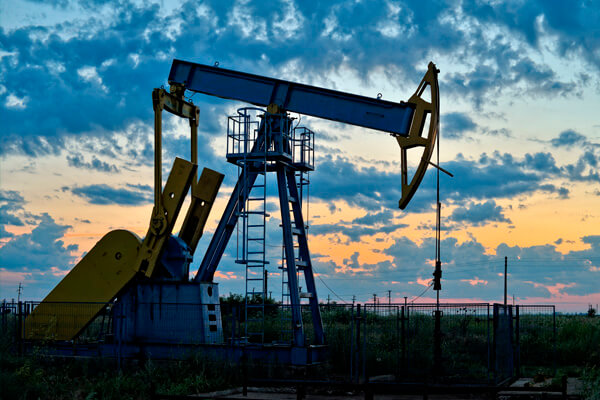Qatar Petroleum to push ahead with expansion despite Gulf crisis
From: REUTERS NEWS AGENCY / 8 Mayo
State energy giant continue with expansion strategy to be on par with oil majors, despite Gulf crisis embargo.

From: REUTERS NEWS AGENCY / 8 Mayo
State energy giant continue with expansion strategy to be on par with oil majors, despite Gulf crisis embargo.
State energy giant Qatar Petroleum (QP) will push ahead with its production expansion and foreign asset acquisition strategy to be on par with oil majors, despite a regional political and economic embargo on Doha, its chief executive said.
Qatar is one of the Organization of the Petroleum Exporting Countries’ smallest producers but is also one of the most influential players in the global liquefied natural gas (LNG) market due to its annual production of 77 million tonnes.
“We are in Mexico, we are in Brazil, we are contemplating investing in the US in many areas, in shale gas, in conventional oil. We are looking at many things,” al-Kaabi said in an interview at QP’s headquarters in Doha.
“We are looking very critically at the United States because we have a position there. We have the Golden Pass that we are investing in,” he said.
Qatar Petroleum is the majority owner of the Golden Pass LNG terminal in Texas, with ExxonMobil Corp and ConocoPhillips holding smaller stakes.
Al-Kaabi said “depending on the project’s cost and feasibility” he expects to take a final investment decision on expanding the Golden Pass LNG by the end of the year.
“I’m not in the business of infrastructure. I’m not going to have a liquefaction plant only. It has to be something that will be linked with an upstream business that we would buy in the US so we need to be naturally hedged,” he added.
To maintain its dominance in the US and Australia, QP is cutting costs at home and seeking to expand overseas through joint ventures with international companies.
“We will always go with one of our international partners that we have business with here in Qatar,” al-Kaabi said. “Some of our partners want to divest, some of our partners want to acquire something together.”
QP is focusing on other opportunities in Mexico, Latin America, Africa and in the Mediterranean, he said. QP is also looking to enter Mozambique, where Exxon and Eni operate, he added.
Al-Kaabi said the share of overseas upstream production will be “a good portion” in the long term, but it will not compare with its share at home.
“Our strategy says we are going to expand in upstream business with a little bit of downstream that will be connected to some other businesses that we are doing and a few one-off deals in petrochemicals,” he said.
We are in Mexico, we are in Brazil, we are contemplating investing in the US in many areas
SAAD AL-KAABI

From Oil&Gas People / 1 de Diciembre de 2017
Mexico spent some 24.1 billion pesos ($1.26 billion) on contracts to hedge its 2018 oil exports, Finance Ministry Chief Economist Luis Madrazo said on Tuesday, part of government’s efforts to stabilize its budget.
Madrazo did not specify the number of barrels of export production that Mexico had hedged with derivatives contracts nor did he detail the average price per barrel of put options that the government has purchased.
In September, the Finance Ministry proposed a 2018 budget that based expected oil export revenue on an estimate of $46 per barrel. Members of Congress increased that estimate to $48.5 per barrel earlier this month as global oil prices rose.
For more than a decade, Mexico’s government has paid for a hedge every year in a bid to guarantee its revenues from oil exports by state company Pemex. The program is seen as the world’s top sovereign derivatives trade.
Last year, the government bought put options at an average price of $38 per barrel to cover 250 million barrels of crude at a cost of $1.03 billion and underpin the 2017 budget, which was based on an average price of $42 per barrel.
The government set aside $4 a barrel from a special fund to make up the difference between its put options and the budgeted price.
This year, Mexico is on track to not see any income from its oil hedge as prices for Mexican crude are currently near $54 per barrel, well above the put options. In 2016, Mexico saw a $2.65 billion payout from its oil hedge.
Mexico hedges its crude every year and deals are closely watched by the market since the trades are big enough to affect prices. The program is a longstanding part of the country’s strategy for safeguarding oil revenues from market volatility.
Mexico used to receive about one-third of federal revenues from oil sales, but it now funds less than one-fifth of the budget with oil sales after the collapse crude prices in late 2014 and a decline in production.

From Oil&Gas People / 1 de Diciembre de 2017




“In exploration and production of oil and gas, sustained quest for technical solutions and the constant search for efficiency-enhancing concepts are daily business”, says Manfred Böckmann, Senior Vice President Exploration DEA Deutsche Erdoel AG.
These measures are a prerequisite for a continuing assurance of our high safety and environmental standards on the one hand and the economic viability of the projects on the other. In times of low oil prices, this is becoming increasingly important and the EAGE offers an ideal platform for the essential exchange of ideas and the discussion of new approaches, together with the experts of other E&P companies, the service industry and the representatives of science”, Böckmann adds.
At DEA’s booth (Stand No. 2230, Hall B), the visitors can experience live presentations of case studies from international DEA projects and are invited to discuss current industry topics with the DEA experts during the coming days.
DEA Deutsche Erdoel AG is an international operator in the field of exploration and production of crude oil and natural gas based in Hamburg. Its focus is on safe, sustainable and environmental conscious exploitation of oil and gas. DEA has 117 years of experience working along the whole upstream value chain as operator or project partner. With a staff force of 1,400 employees DEA has shares in production facilities and concessions in, among others, Germany, Norway, Denmark, Egypt and Algeria. Moreover, in Germany, DEA also operates large subsurface storage facilities for natural gas.
Copyright: Reuters
